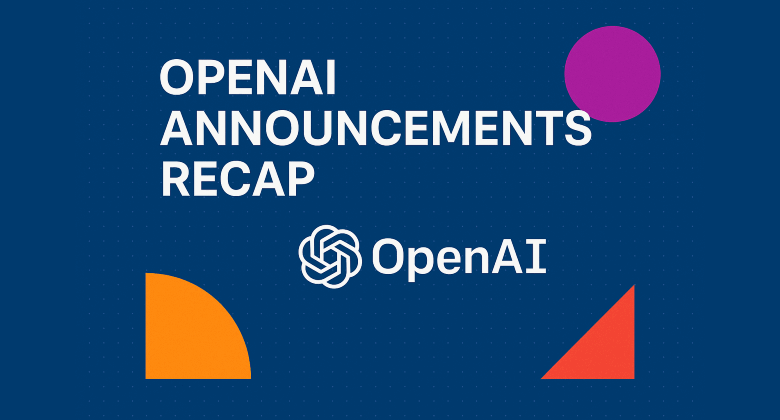OpenAI used its OpenDev stage on October 6, 2025 to push ChatGPT from a capable assistant into a platform you can build on. The headliners were apps that run directly inside ChatGPT via a new Apps SDK, AgentKit for building and shipping agentic workflows, general availability of Codex with a fresh SDK and Slack integration, and a strategic AMD partnership aimed at scaling compute to six gigawatts. This post breaks down what shipped, why it matters, and how developers can start building today.
OpenAI’s message was clear. ChatGPT is becoming the place where users get things done and where developers meet them with rich, interactive experiences. Alongside platform pieces for agents and code, OpenAI also highlighted the infrastructure needed to power it all. Think of it like opening a new mall, stocking the storefronts, giving shopkeepers modern tools, and upgrading the power grid on day one.
ChatGPT SDK
You can now run full apps inside ChatGPT. Users trigger them in natural language, for example “Spotify, make a playlist for my Friday party,” and ChatGPT brings up an interactive interface right in the chat. Initial partners include Booking.com, Canva, Coursera, Expedia, Figma, Spotify, and Zillow, with more on the way. Developers get a preview Apps SDK that is open source and built on the Model Context Protocol, which means you define logic and the app UI, connect to your own backend, and reach a very large ChatGPT audience. App submissions and monetization, including support for the Agentic Commerce Protocol, are slated for later this year. Availability begins outside the EU for Free, Go, Plus, and Pro users.
Examples
- You are house hunting. ChatGPT suggests the Zillow app as you describe your budget and neighborhood, then shows an interactive map you can filter without leaving the conversation.
- You want a quick conference poster. Start with a bulleted outline, then ask the Canva app to turn it into a clean slide deck while you keep chatting to refine the color palette and copy.
AgentKit
AgentKit bundles the pieces teams usually stitch together by hand. It includes Agent Builder for a visual, versioned canvas to design multi agent workflows, a Connector Registry to centrally manage data and tool access across OpenAI products, ChatKit to embed polished agent chats in your own apps, and expanded Evals to measure and optimize agent performance. Reinforcement fine tuning received updates too, including custom tool calls and custom graders, with RFT generally available for o4 mini and in private beta for GPT 5. ChatKit and the new Evals features are generally available today, while Agent Builder and Connector Registry are in beta.
Examples
- A support agent composed in Agent Builder routes issues, checks for jailbreak attempts with built in guardrails, hits your MCP connectors for account data, and hands off to a retention agent when needed. You track quality with Evals datasets and trace grading, then push accuracy higher with reinforcement fine tuning.
Codex goes GA (Generally Available)
Codex graduated to general availability with three notable additions. A Slack integration lets you tag @Codex in a channel and have it pick up context, run tasks in Codex cloud, and hand back results. The new Codex SDK embeds the same agent that powers the CLI into your tools, starting with TypeScript. New admin controls give workspace owners better visibility and guardrails. OpenAI says daily usage surged since summer and that GPT 5 Codex has been one of the fastest growing models in the portfolio. Pricing details and plan availability are covered in the announcement.
AMD x OpenAI compute partnership
To keep up with demand, OpenAI announced a multi year, multi generation deal with AMD to deploy six gigawatts of Instinct GPUs, starting with one gigawatt of MI450 in the second half of 2026. The companies aligned incentives through a warrant structure tied to deployment milestones and share price targets. The goal is straightforward, to make sure the platform has power for what developers will build on top of these new capabilities.
Examples
- In Slack, a teammate tags @Codex on a refactor thread. Codex gathers context, runs changes in a cloud environment, and replies with a link to a diff for review. Your CI uses the Codex SDK GitHub Action to repeat the same checks on every pull request.
What Does This Mean For Me?
Consumer product teams
Build a ChatGPT app that onboards new users, checks entitlements via your backend, and offers instant checkout using the Agentic Commerce Protocol once it launches.
Enterprise operations
Use Agent Builder to design a multi agent triage system, connect SharePoint and Teams via Connector Registry, enforce guardrails for PII, and track quality with Evals datasets and trace grading.
Developer experience
Roll out Codex across your organization’s editors, terminals, and Slack. Use the new admin dashboards to monitor usage and quality, and the SDK to bring Codex into internal developer portals.
Conclusion
OpenDev’s announcements make ChatGPT a place where software shows up as conversation plus interface. Apps invite developers to meet users where they are, AgentKit gives teams a practical path to robust agents, Codex GA brings opinionated, production grade coding help, and the AMD deal signals OpenAI’s intent to back it all with serious compute. If you are building for users who already live in ChatGPT, the path from idea to distribution just got shorter.

